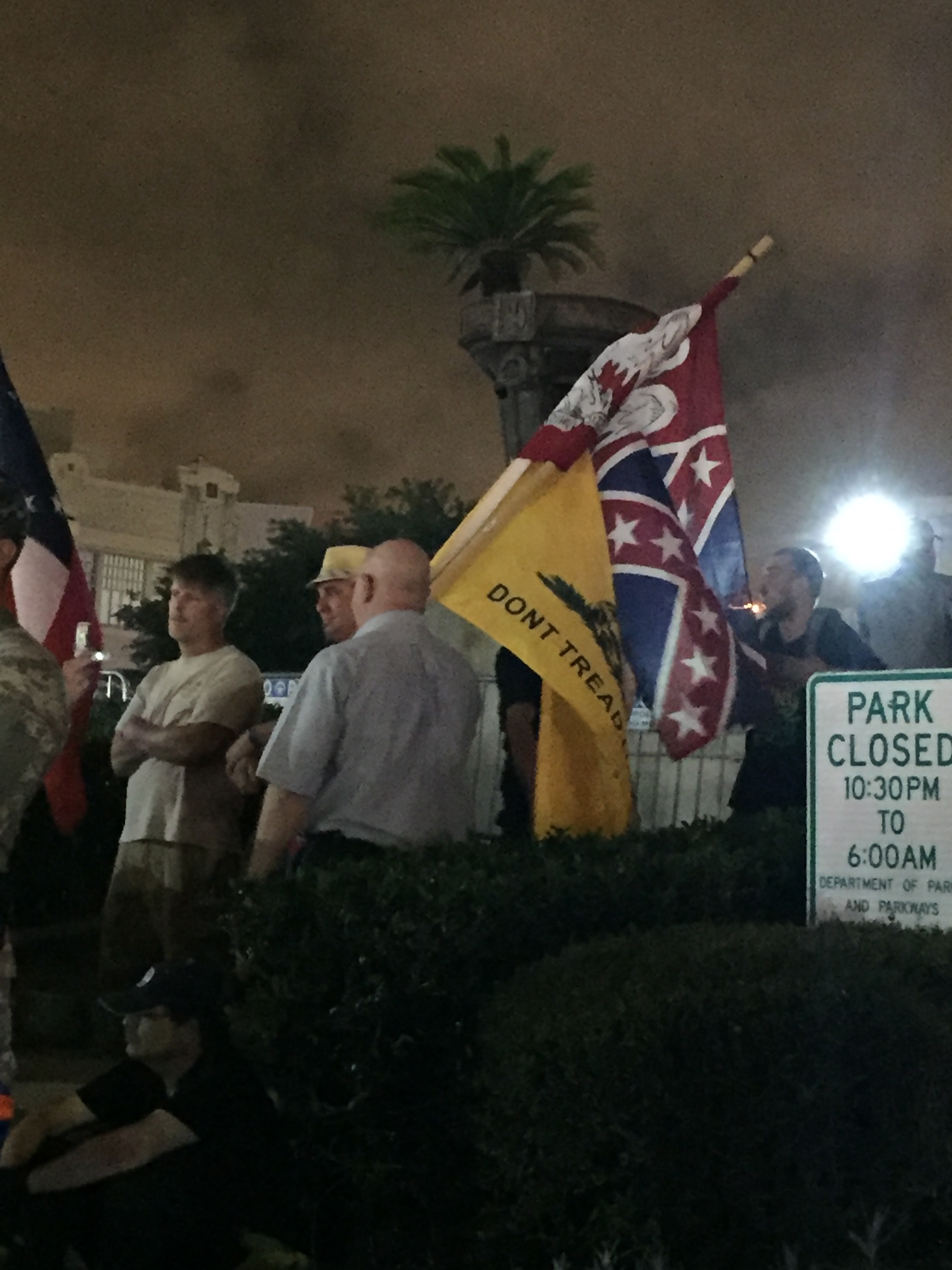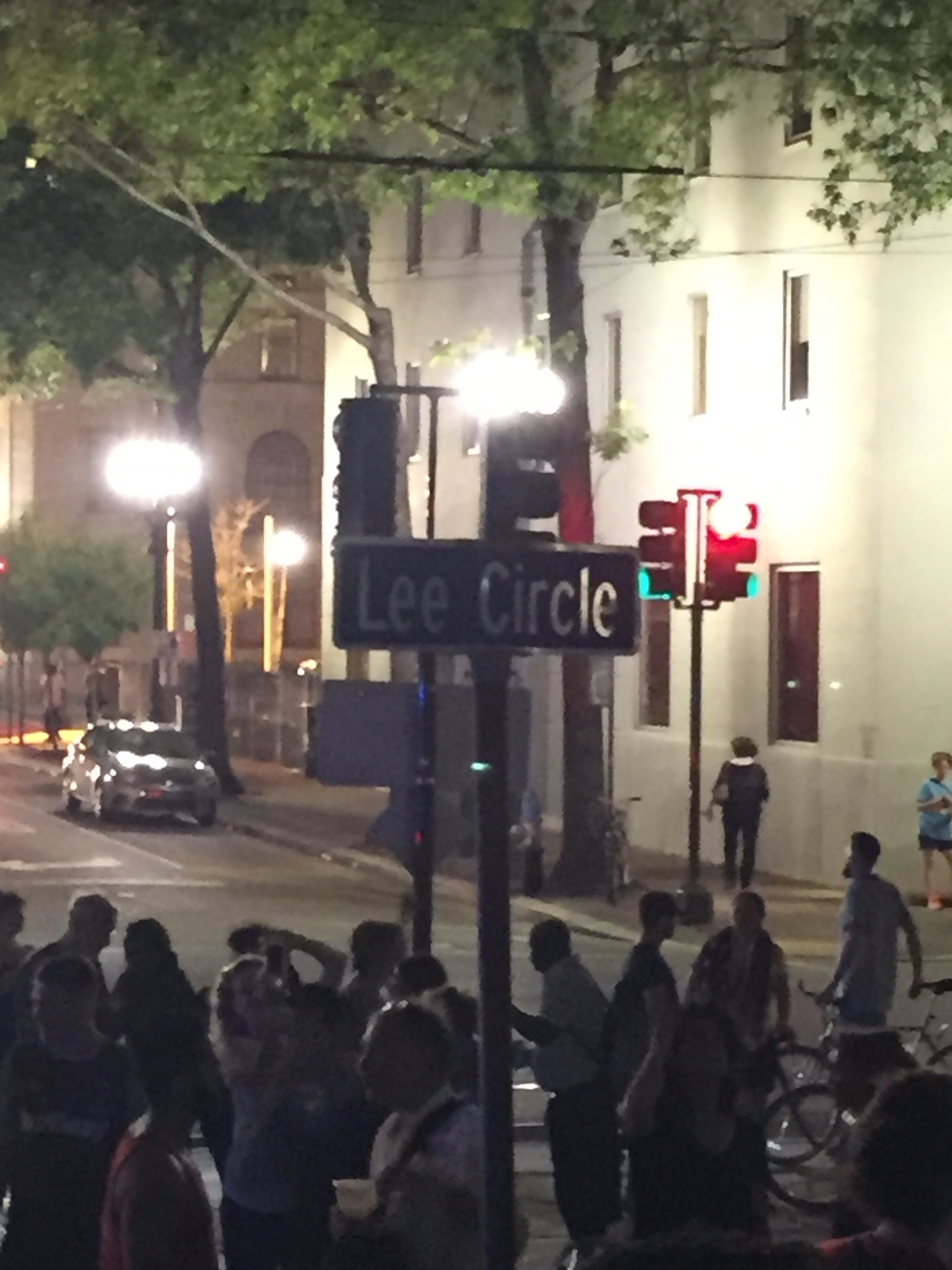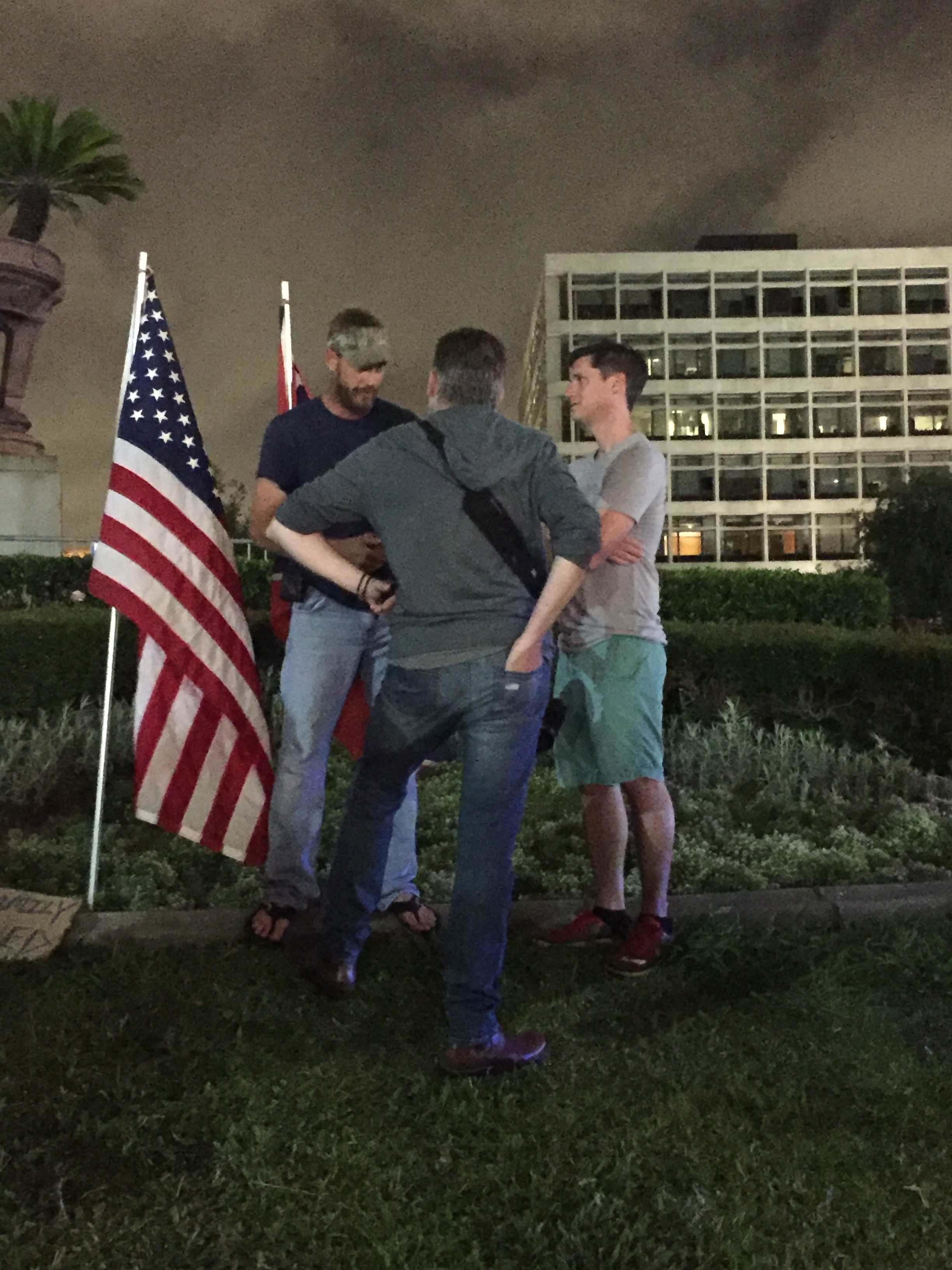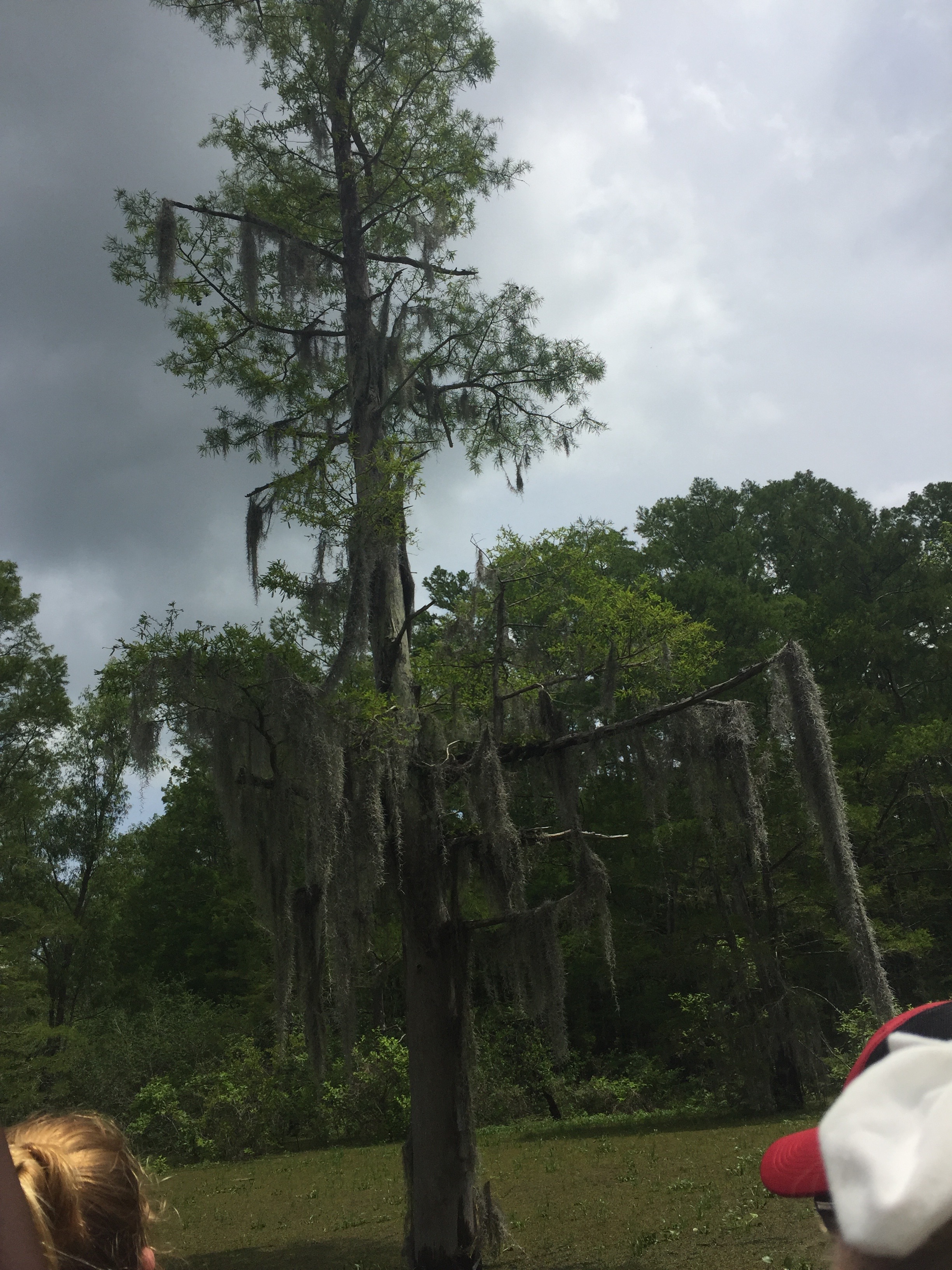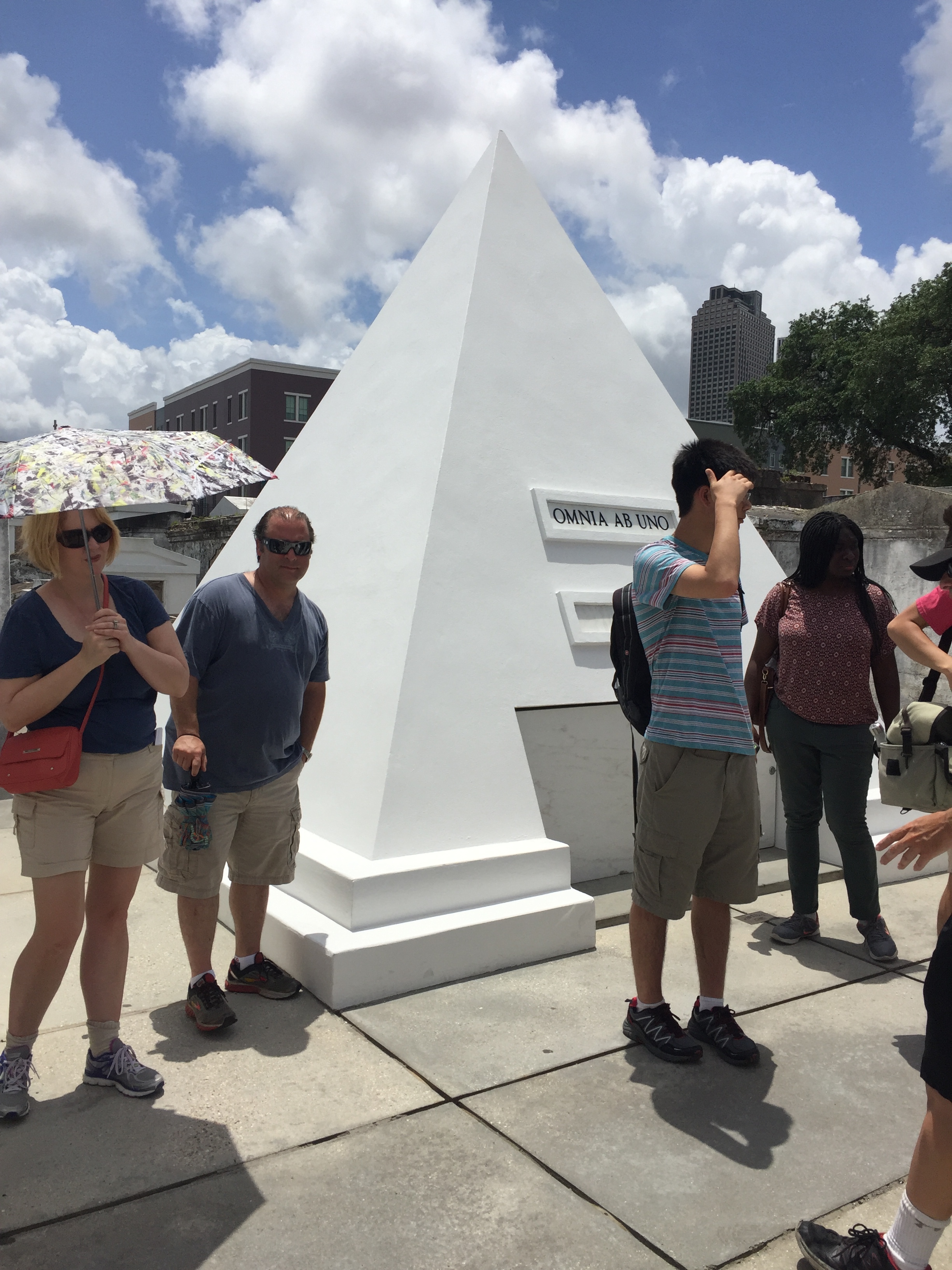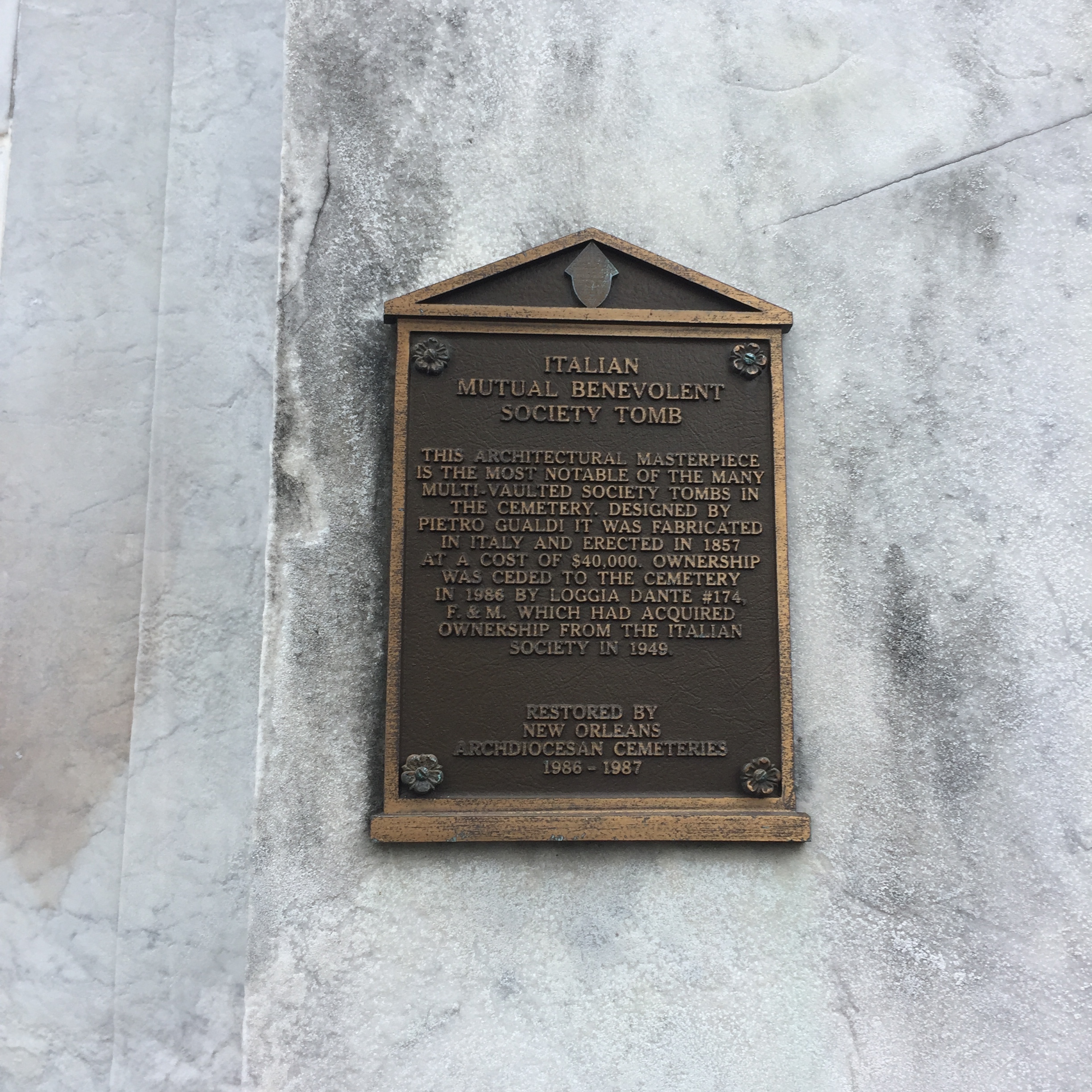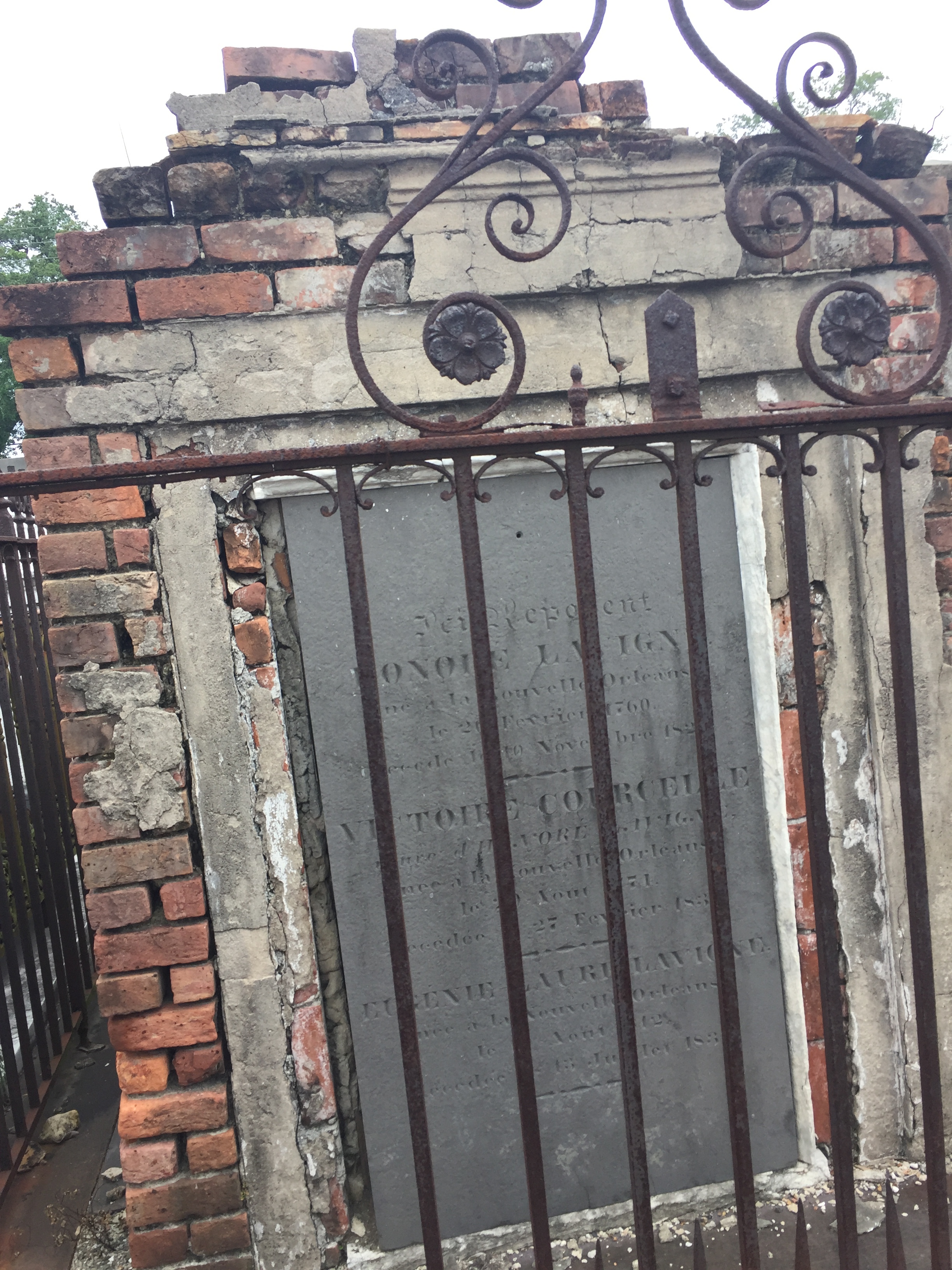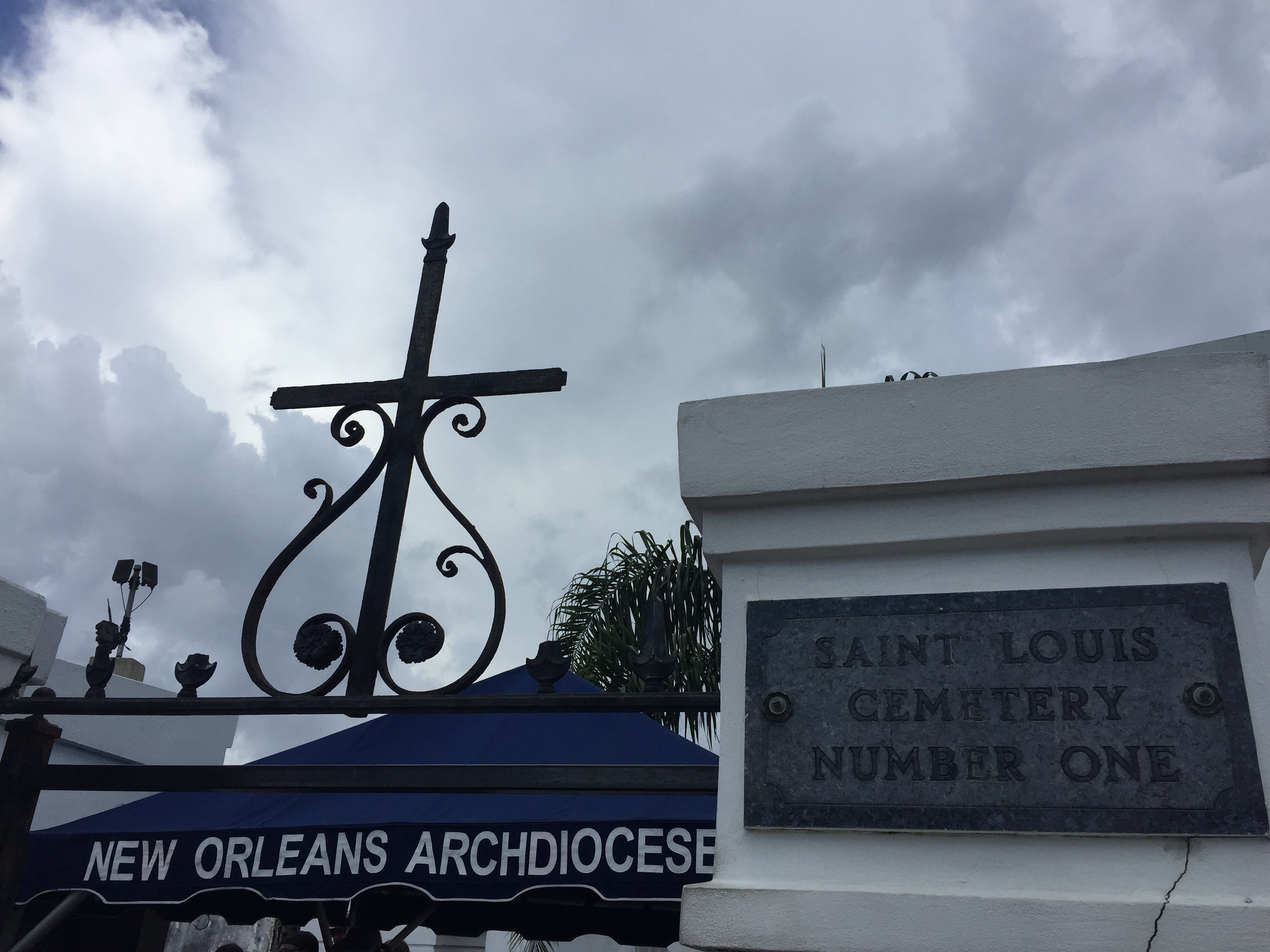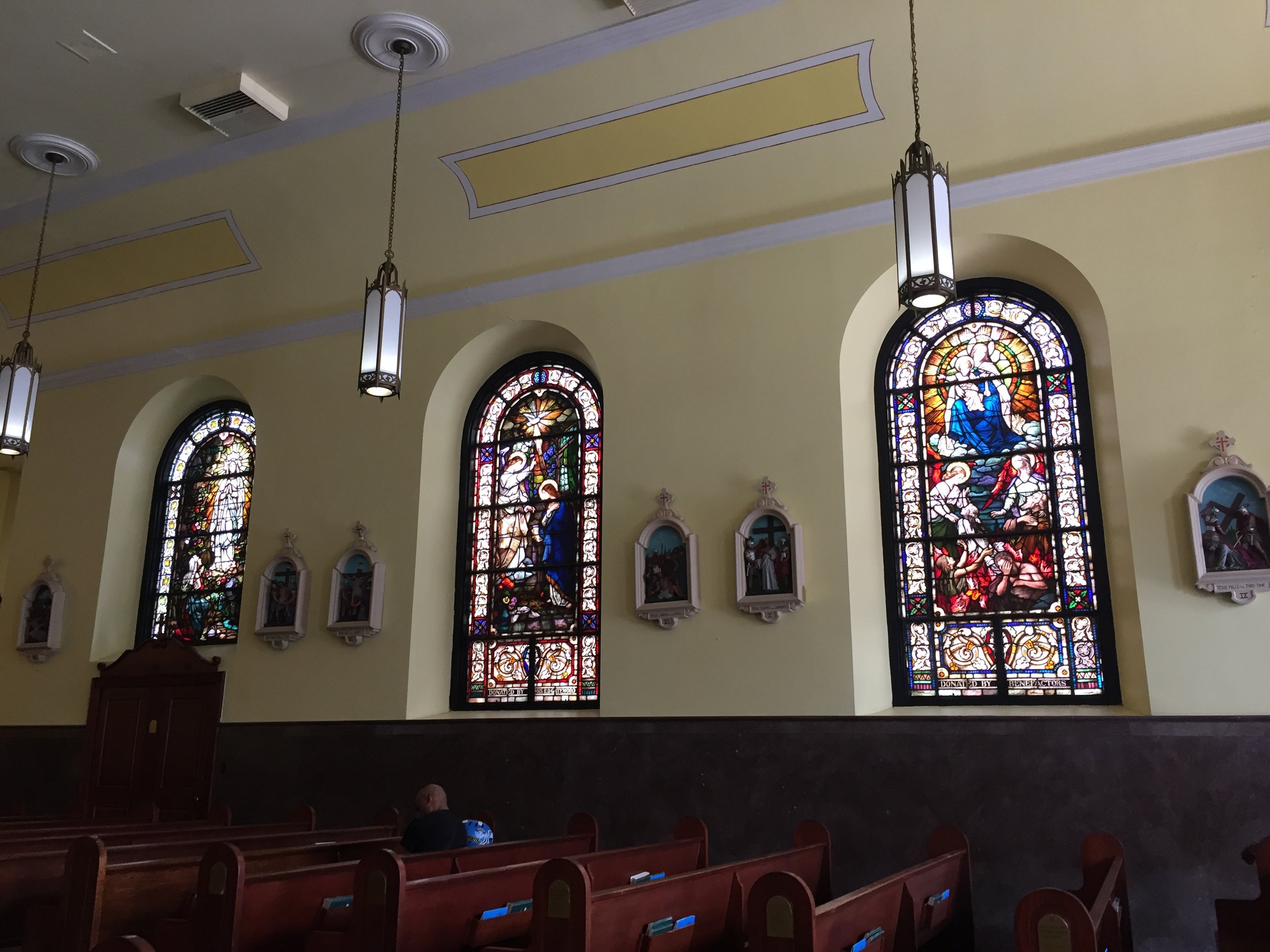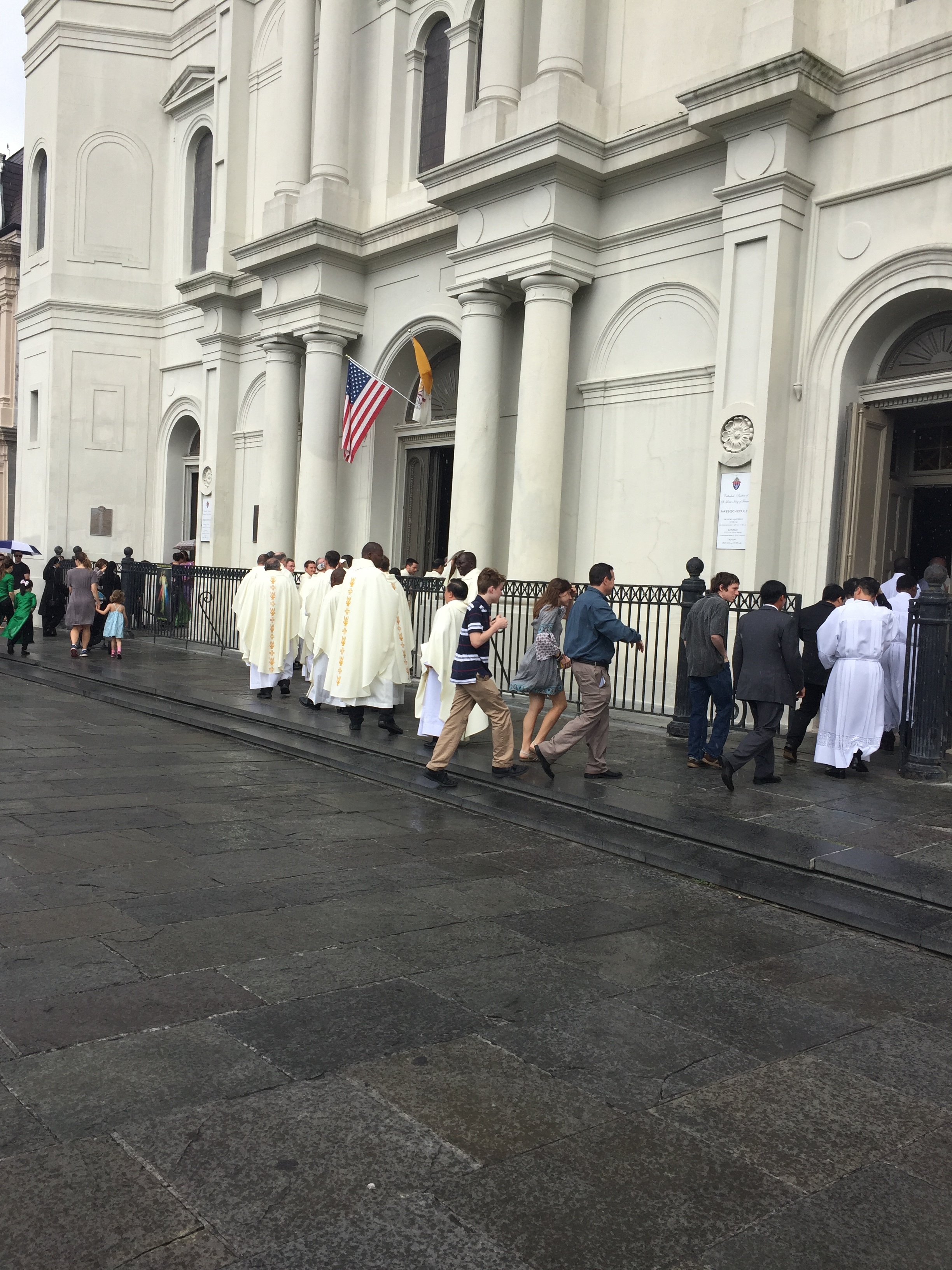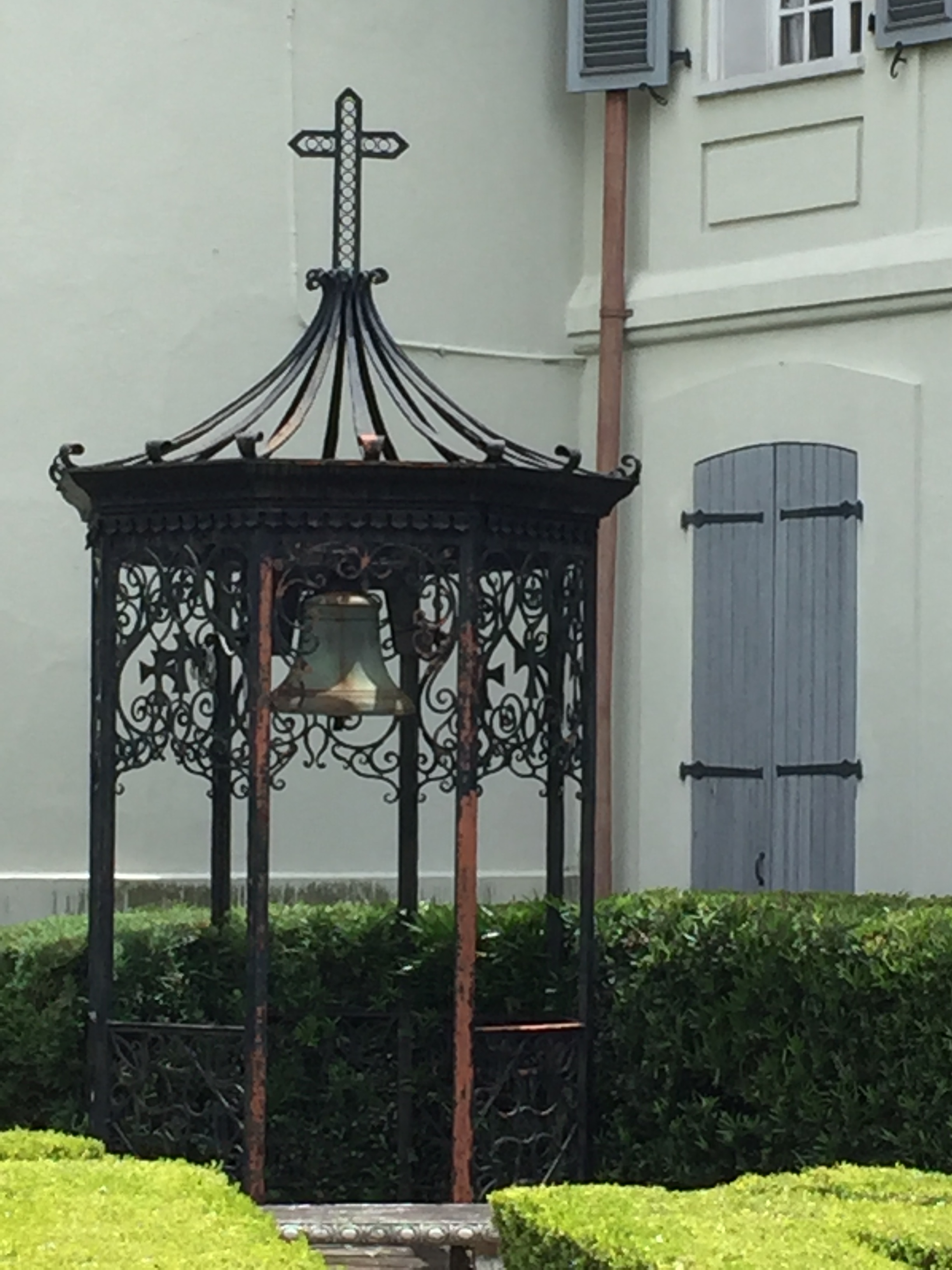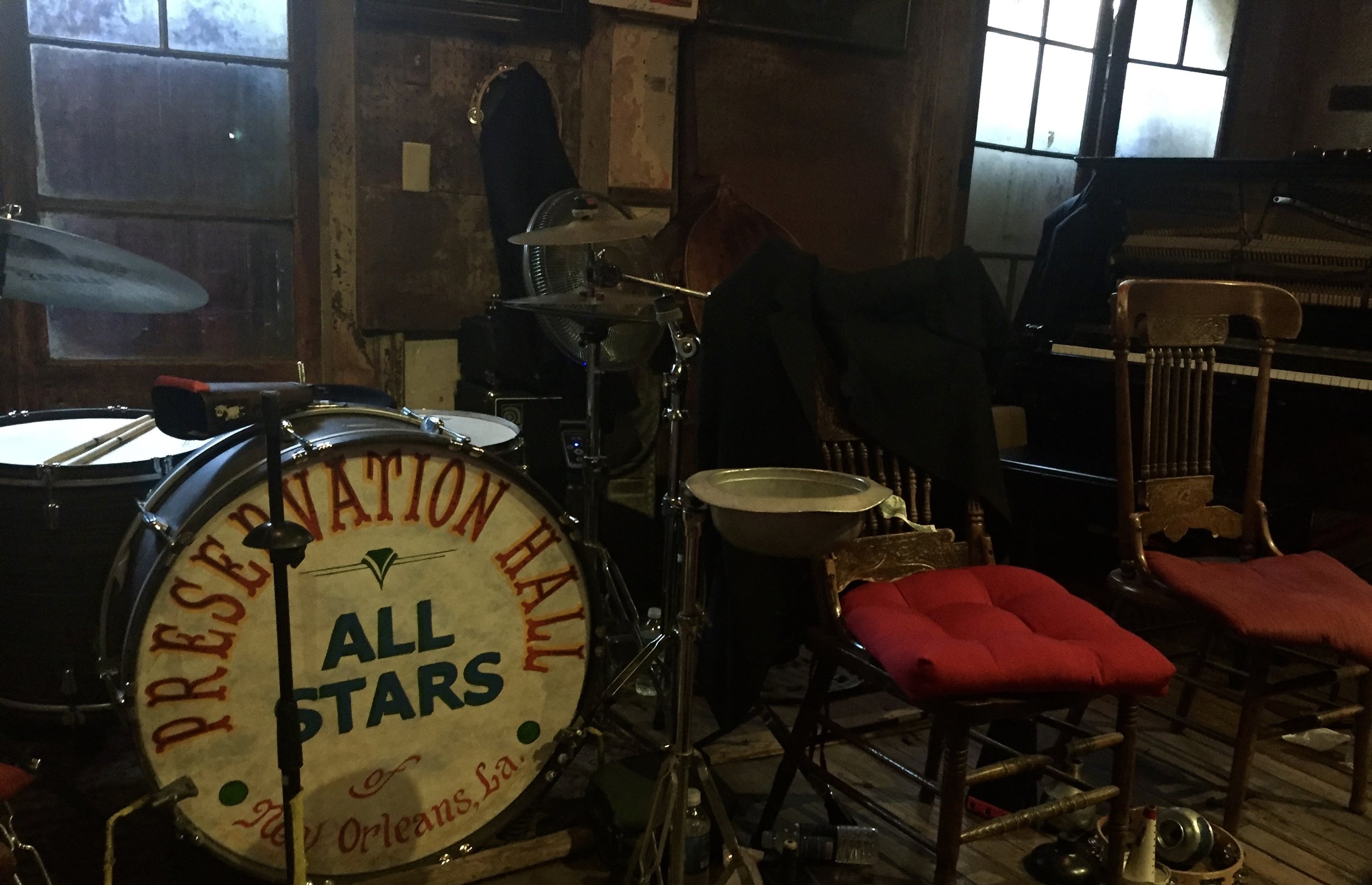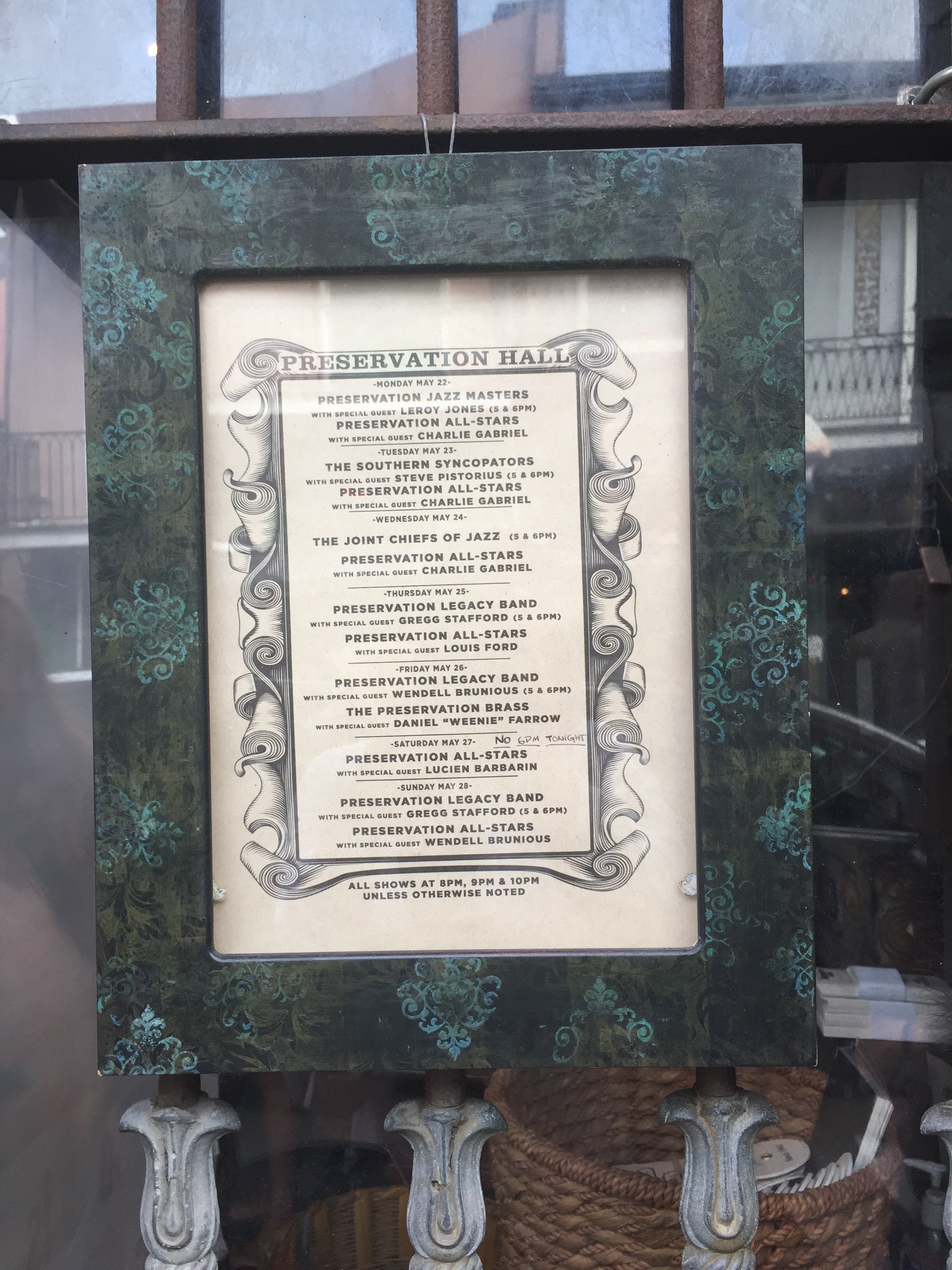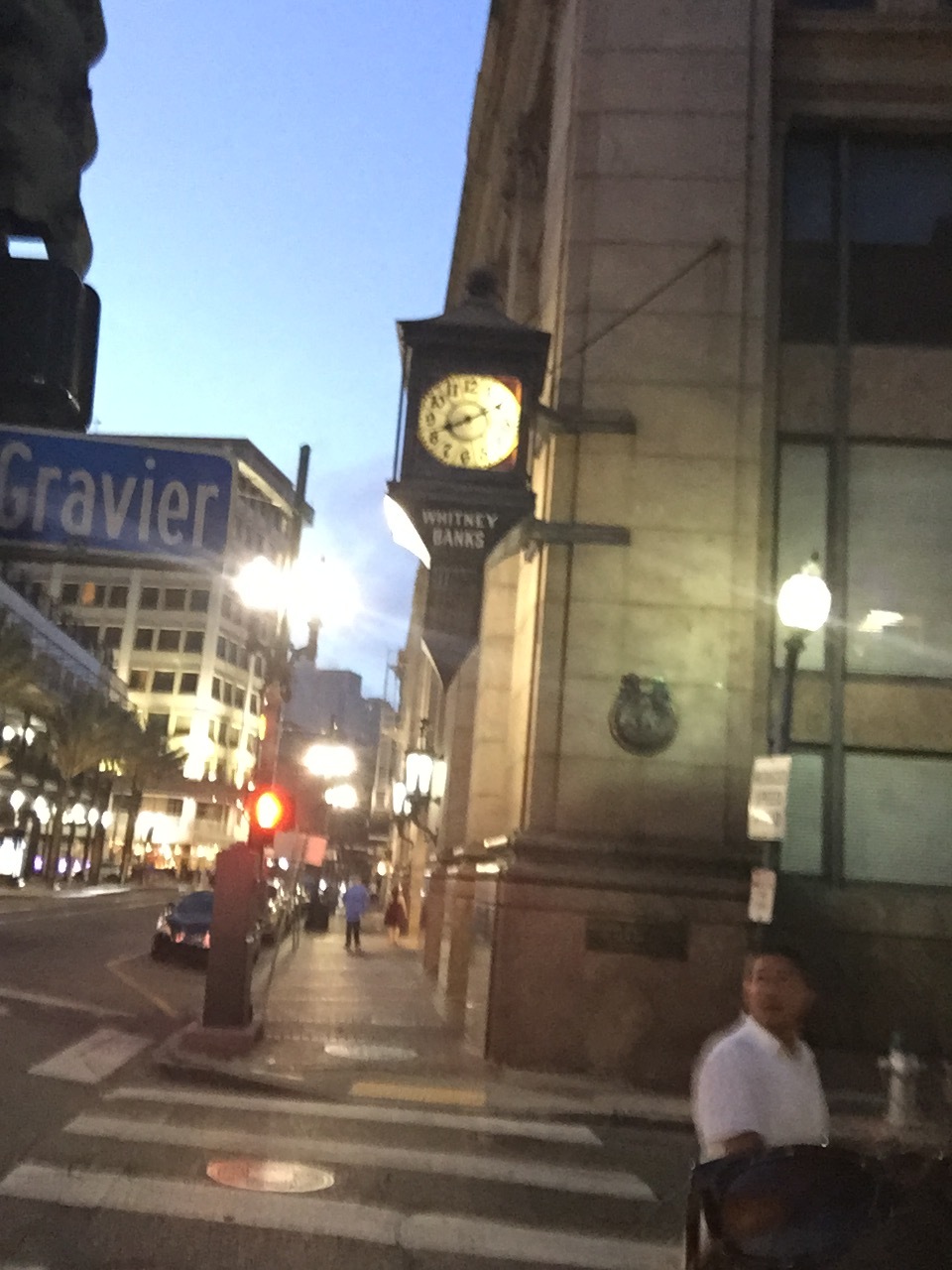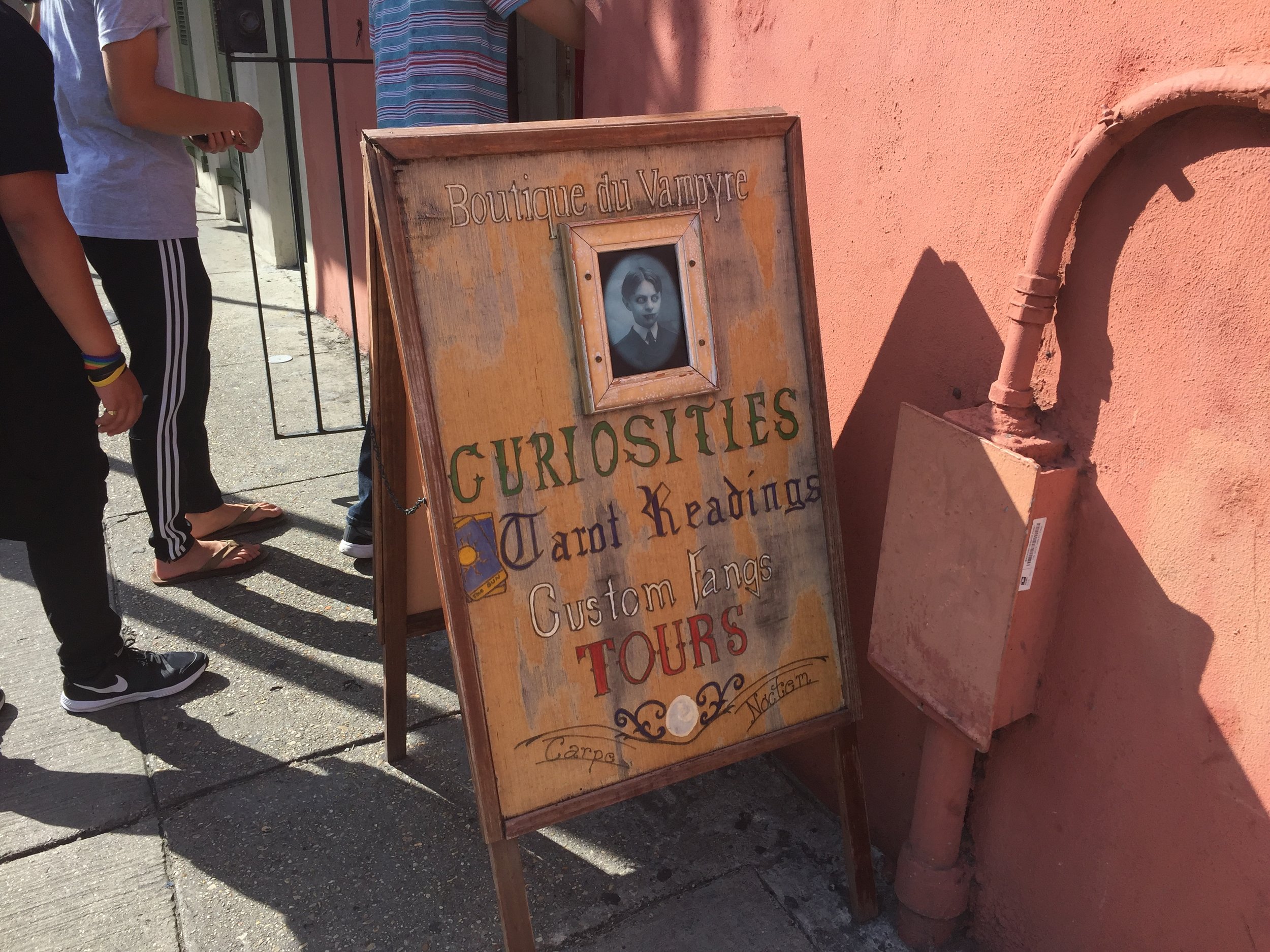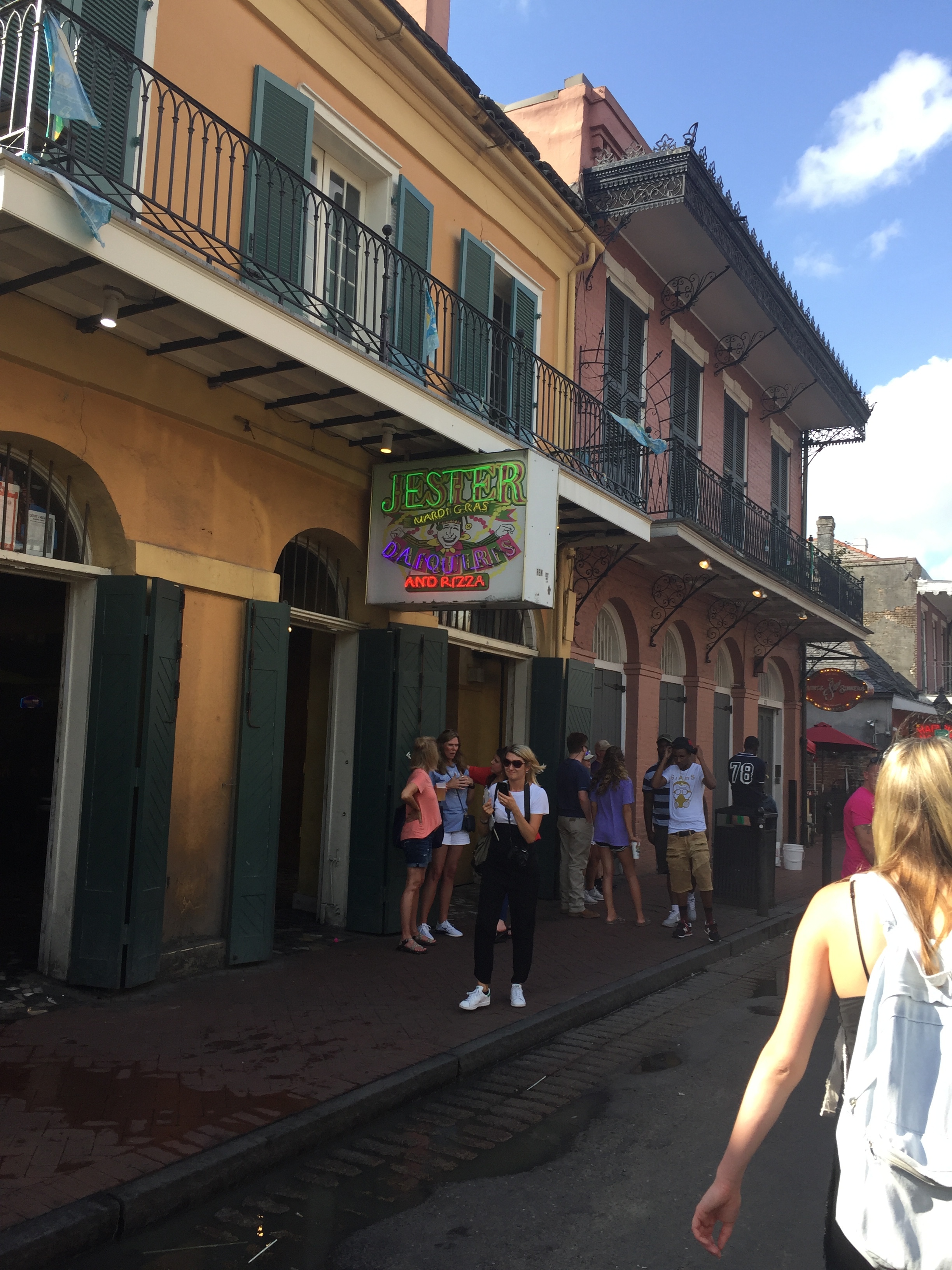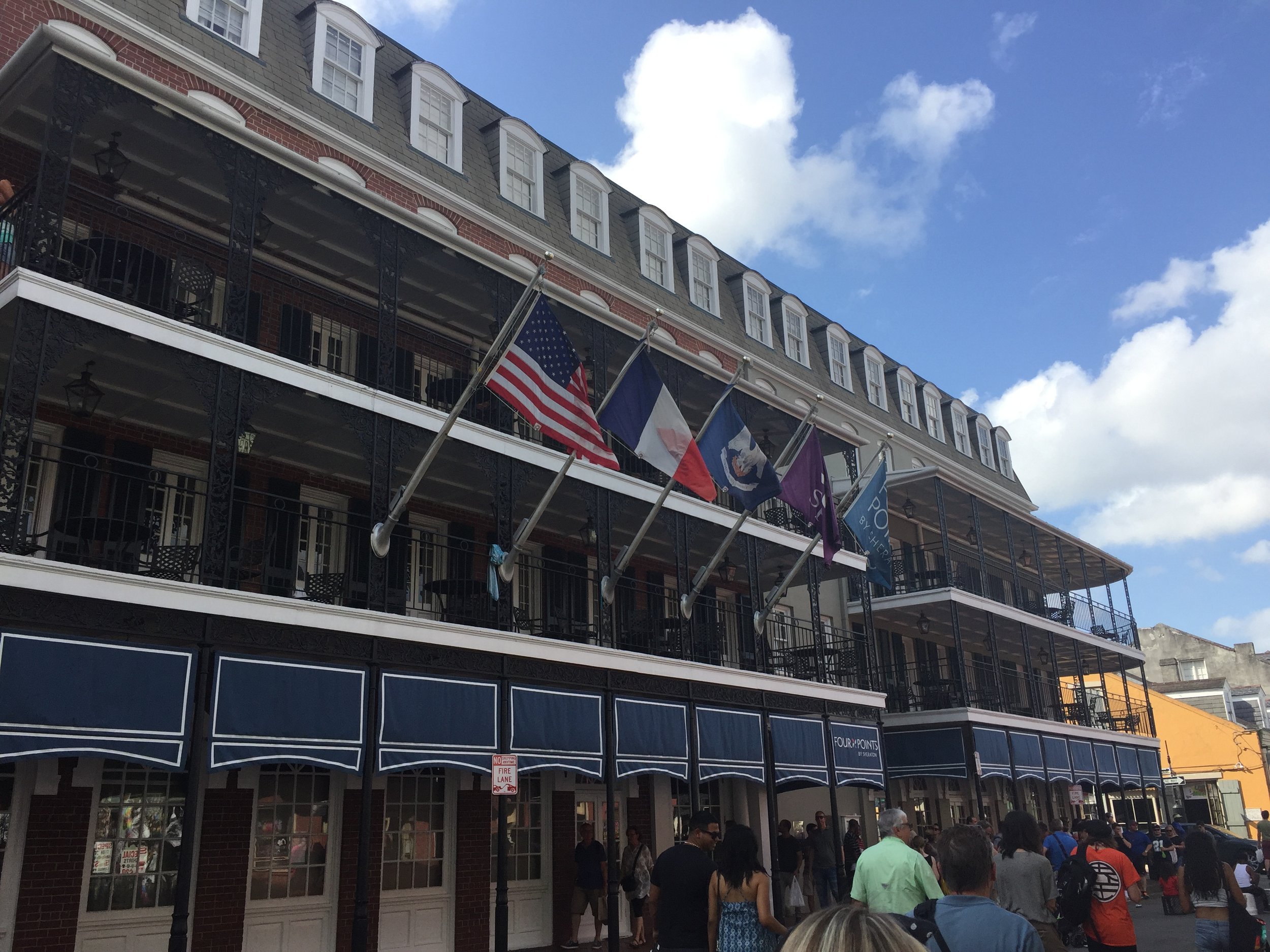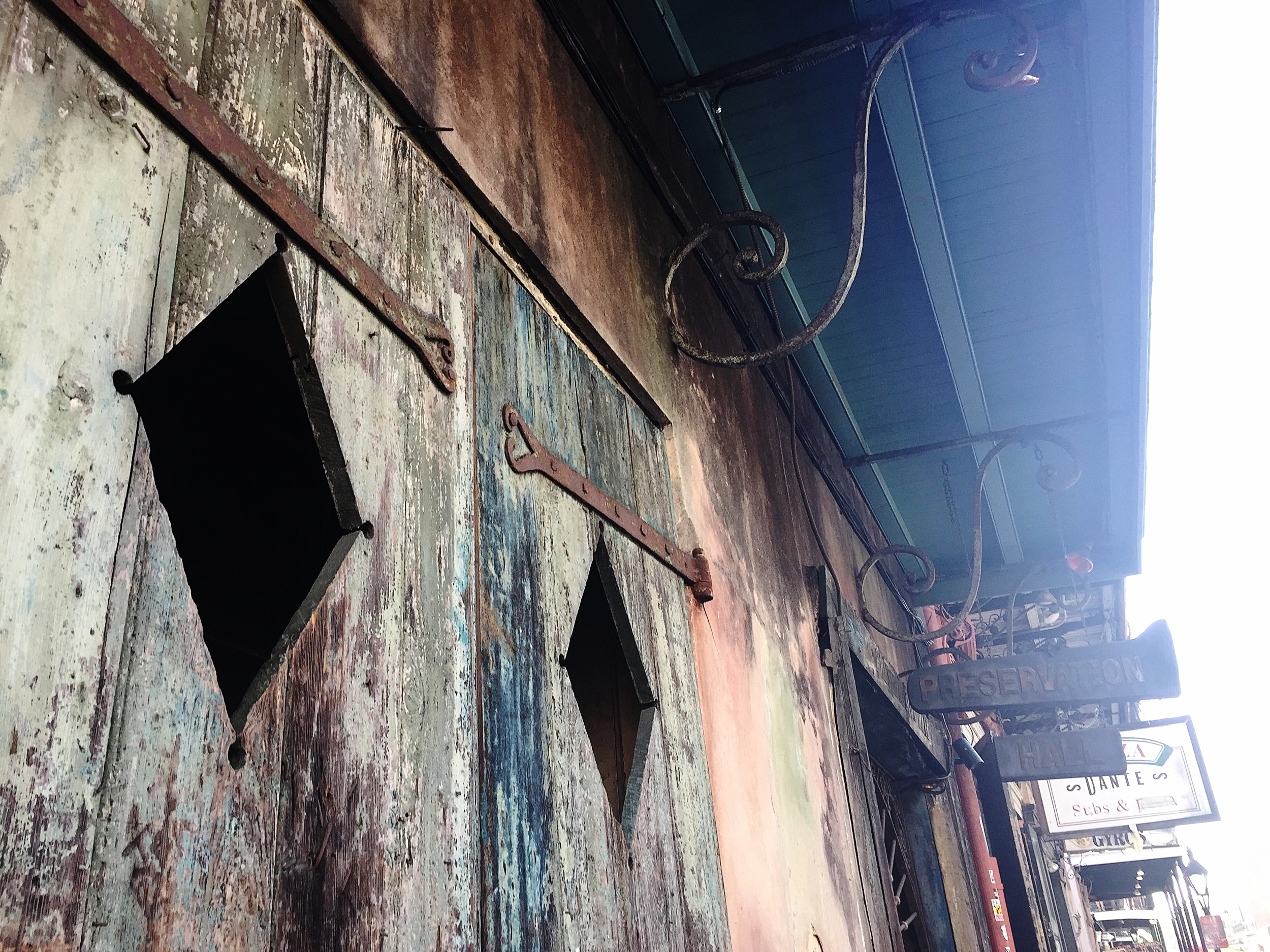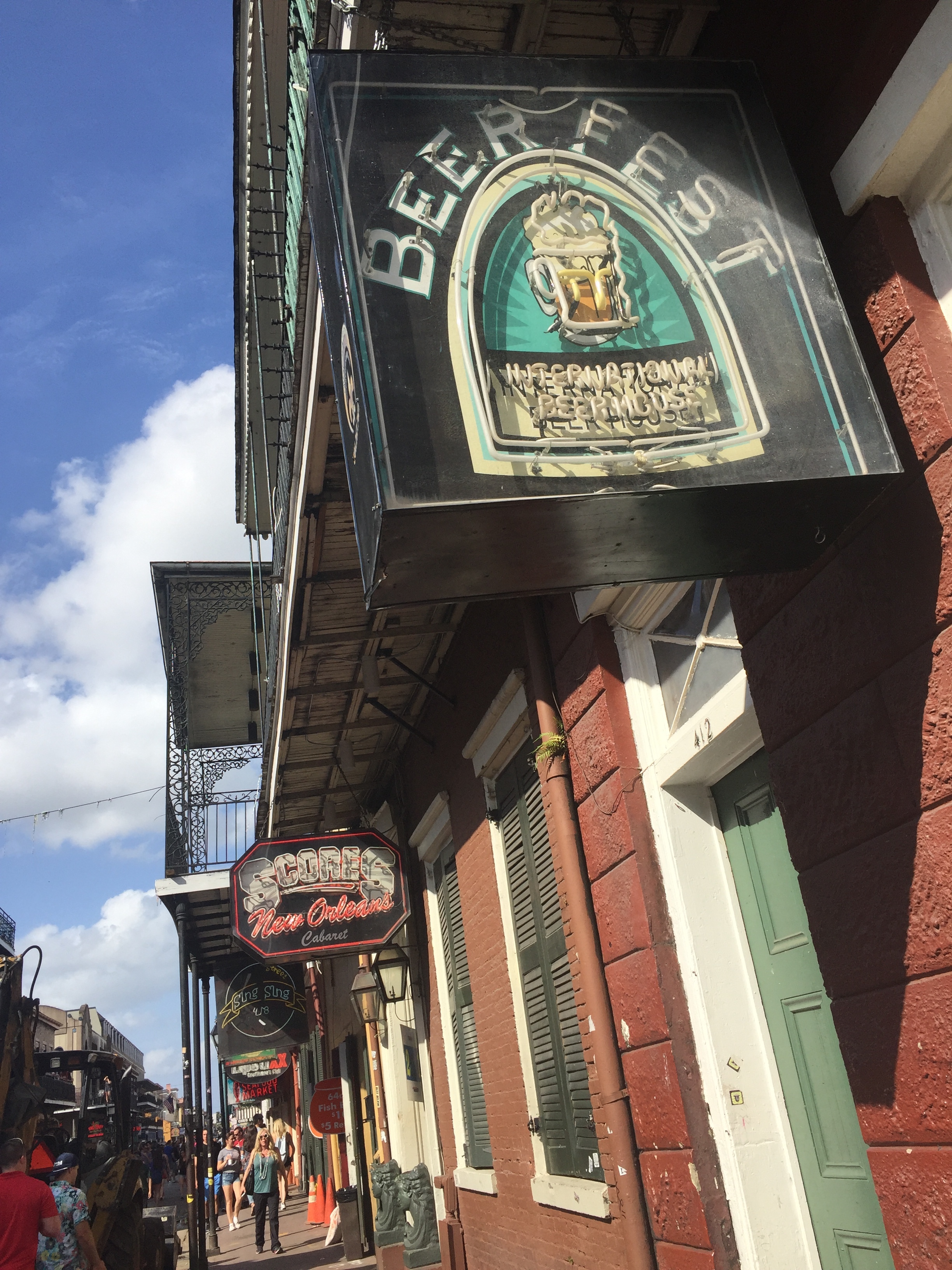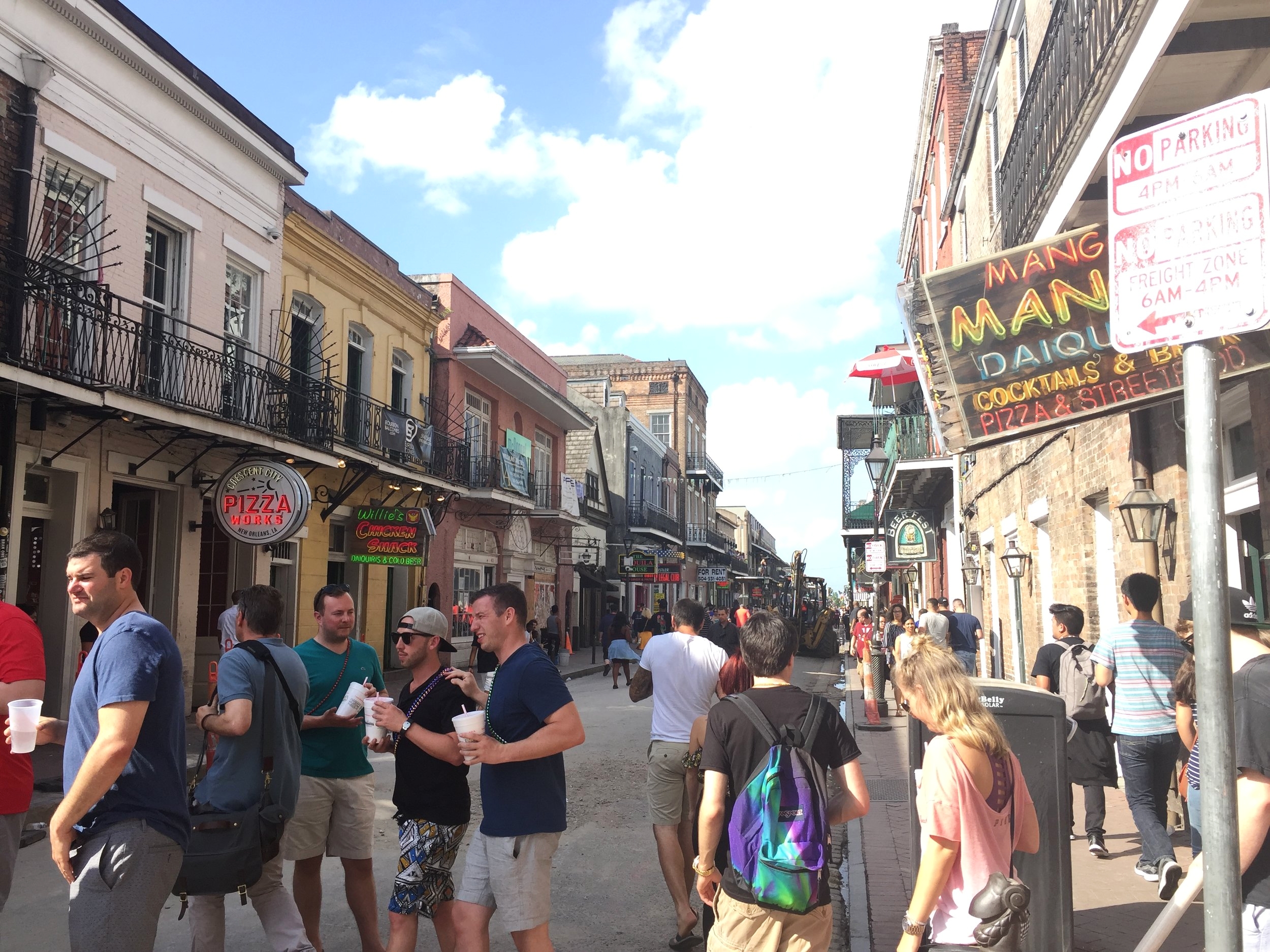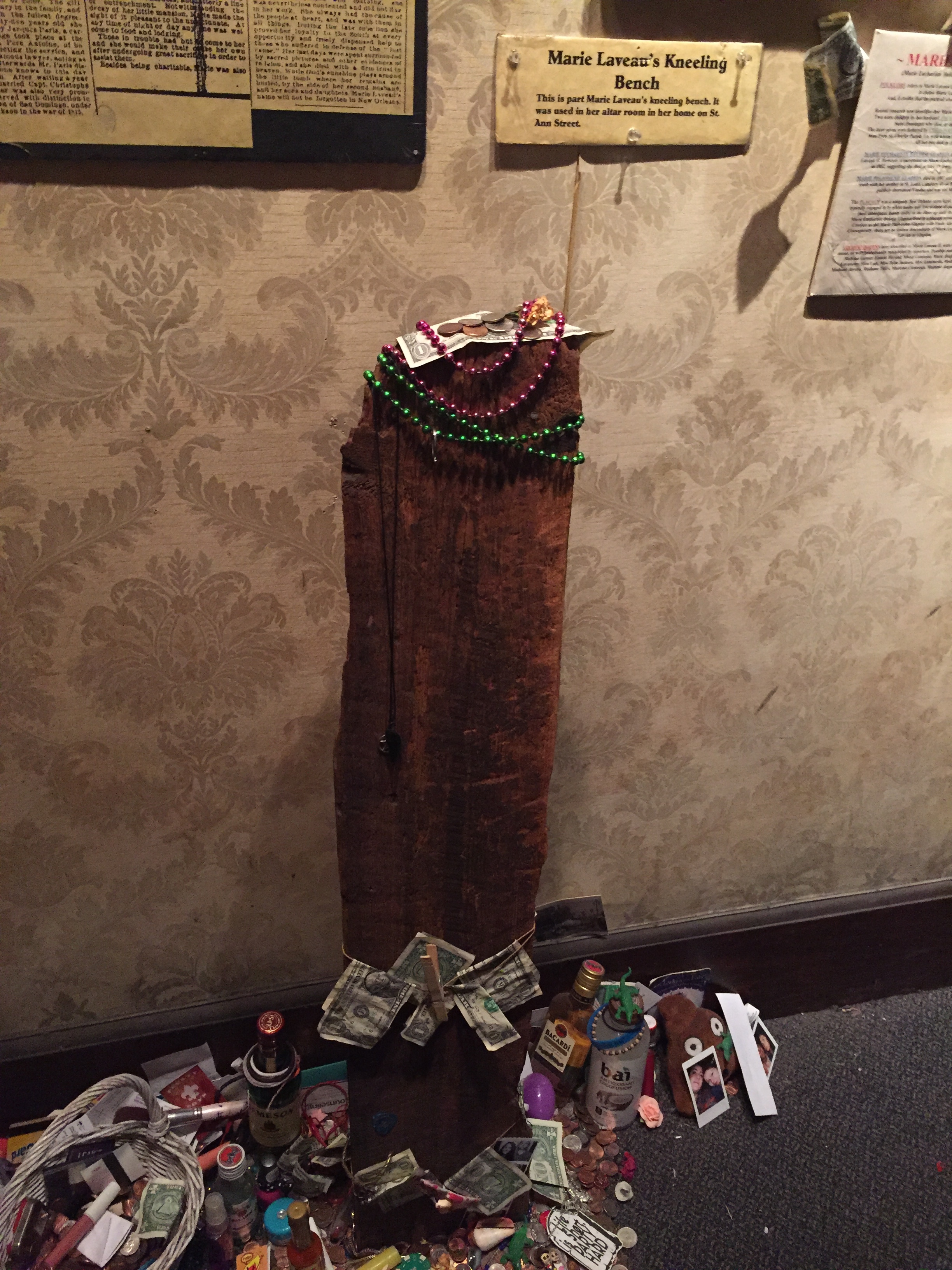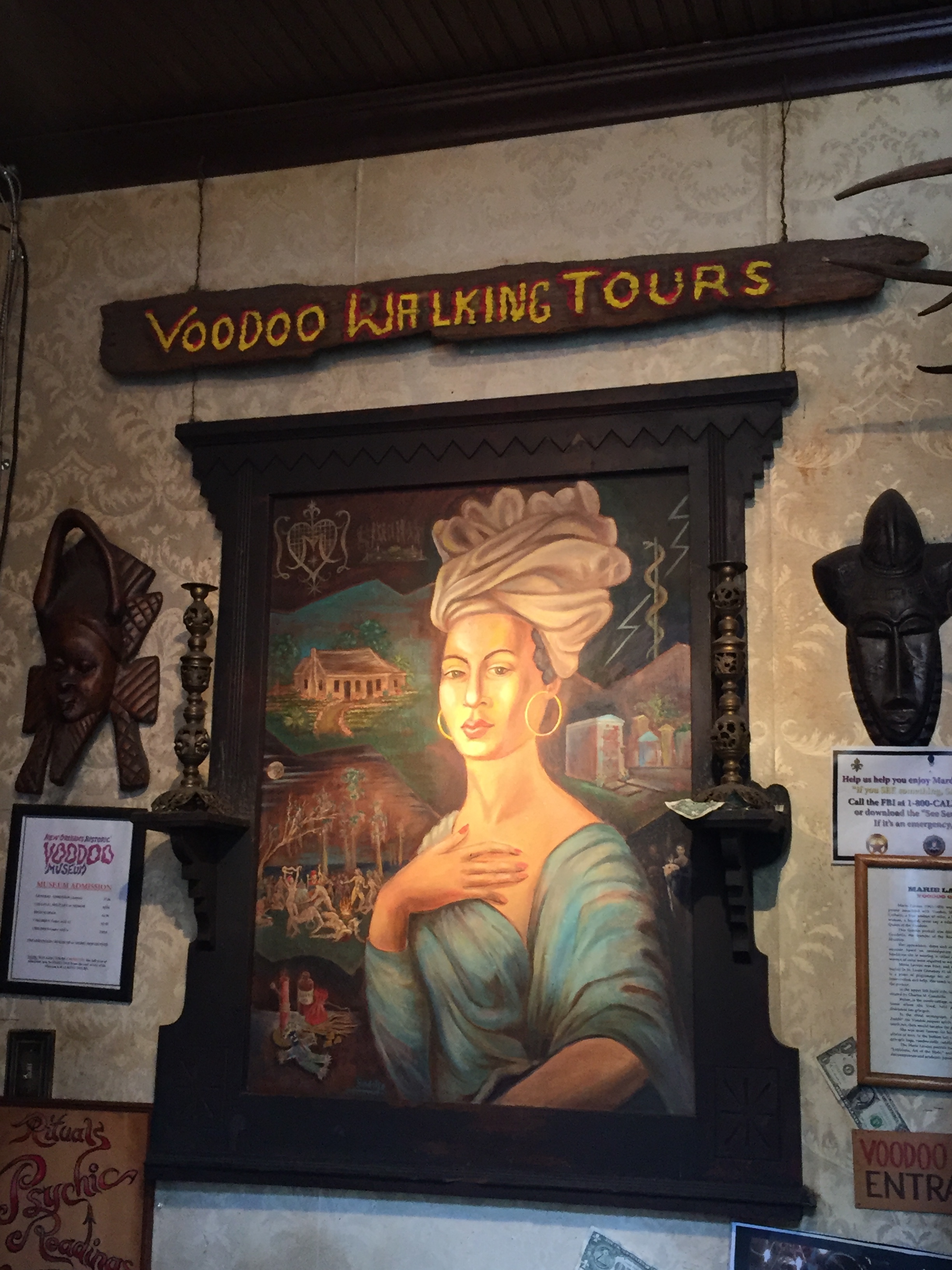New Orleans - A Hub for Supernatural Fiction
Anne Rice chose the perfect setting for her novel Interview with the Vampire. Not only do the southern parts of the United States provide a rich history, but they also showcase weather and natural disasters that bring with them a lingering feeling that danger is on the horizon. This provides the perfect atmosphere for a supernatural narrative, especially literature focusing on vampires. However, while the south is ideal with it’s history and geographical features, the culture is what makes Louisiana specifically perfect for this novel. Louisiana is essentially an extension of the French culture, and aspects of “French-ness” can be found all over the state, though especially in New Orleans. Sensuality and sexuality, nightlife, overindulgence, and extravagance; the aspects of French culture that coincide with common themes of vampirism, and what made Louisiana the perfect choice for the setting of this novel.
Ghosts of the Past
History is the first thing that comes to mind when I think of all of the ways Louisiana is creepy. With slavery and the Civil War, both which brought a lot of death, likely baring restless and vengeful souls, you could imagine that every inch of this state is haunted. If not death from these two causes, then likely from disease. Claudia's mother in Interview with the Vampire had died of Yellow Fever when Louis found them. Then in more recent history, there have been multiple hurricanes, the biggest and most famous being Hurricane Katrina. With these many death bearing situations, it seems to me that there is a strong likelihood of haunting in Louisiana. History is important in breathing life into the supernatural. Ideas of otherworldly creatures don't just appear without provocation from somewhere.
As if this idea was not already pounded into my brain, it would be. The first thing we were met with upon arriving in New Orleans was a protest against the removal of the statue of Gen. Robert E. Lee from his pedestal in Lee Circle.
Naturally Creepy
The nature of Louisiana alone is enough to make it the perfect setting for a vampire fiction, or any supernatural fiction really. The humidity that breaks down wood buildings over time, decaying houses across the state. The overgrowth of foliage, that makes it seem almost as if the greenery in Louisiana is alive, and with a mind of its own to overtake the man-made structures that have been imposed on its land. The Spanish moss is beautiful, though eerily so. The wrought iron railings in the French Quarter, and the fences in the Garden District, that also look as if they are alive. Twisting and turning creepily when casting shadows, and tall and imposing to keep those unwanted out. Then there is the prominence of the Catholic religion and the raised cemeteries, but we'll get to that later.
The Anne Rice house (second row, first picture) is a great example of the animated foliage. The trees look like they are moving, coming out to grab you, and the roots are eating away at the curb and the brick sidewalk, spilling out into the street. The American Horror Story: Coven house (first row, last two pictures) is only a few blocks away from Rice's previous home, and it is so beautiful, but at the same time you can imagine that it might be haunted.
Religion & Death
Like most things, vampire folklore has evolved over time. In the ancient times there were demons: creatures of darkness, fallen angels by the Christian belief, that would possess members of the community and reek havoc. Though this idea of demonic possession still floats around in certain religious societies, it has also branched off and evolved into the creation of another demonic creature: the vampire. The folklore and religion that gave breath to this “creature of the night” is heavily rooted in European culture, so it is understandable that the further into the future and more westernized this idea becomes, the European roots will live on in modern depictions. As Louisiana was an extension of French culture in the new world, it makes sense that if these creatures were to travel across the Atlantic Ocean, they would end in this part of America.
If you have ever been in an old European Catholic church, you would know that they are not shy whatsoever about death. In fact, the crucifixion scene is popular to display in entryways, and over altars. Some show the nails in Christ's hands and feet and then a little blood. Others go all out. I'm talking horror style gore, the visions of nightmares, namely mine as a child. Louisiana has a similar openness about death, though they show it in a different way.
The cemeteries of Louisiana are so prominent, you could not miss them if you tried. They are above ground due to the geographical problems that Louisiana poses; wood floats, so when the land floods, well you could imagine the problems. All over the state, the inhabitants of Louisiana are not shy or squeamish about death at all. In fact, graveyards are across the city, some bodies were never moved when the city grew and the cemeteries downsized and moved. The gas station next to St. Louis 1 cemetery found a few surprises when they were laying their foundation. We even spotted a cemetery next to a playground in Grand Isle.
No only is this openness about death, and borderline showcasing of it, provoke stories of the undead to be told, these 'cities of the dead" provide such a great setting for vampire fiction. We toured the St. Louis Cemetery Number 1, where Louis's brother was buried, the St. Louis Cathedral, and an Ursuline convent. We even visited the Lafayette No. 1 cemetery where Claudia hunted in Interview with the Vampire. Nature played a part their as well in adding to the already eerie quality of an old cemetery; vines crept in, through, and around some of the tombs, cracking a few. Some graves were even open.
“(The Feast of All Saints) was a festival in New Orleans; a celebration of death, it might have seemed to tourists who didn’t understand it, but it was a celebration of the life after.”
Extravagance in Vampire Pop-Culture
Due to the city’s origins, there is a certain “French-ness” associated with the state of Louisiana. The Creole citizens in New Orleans especially fit this mold, and specifically the French Quarter. There are certain aspects of French culture that fit so well with the classic example of vampires. One of these aspects is living a dramatic and lavish lifestyle. The French reputation for being extravagant and dramatic people, parading what wealth they have to impress their neighbors. This was not lost among the people of Louisiana, especially Louis’s family and those plantation owners at the time the book is set who had come from France and been granted land to settle indigo plantations. They came over with luxuries not yet available in the “new world,” and continued accumulating furniture and other material objects to showcase their riches. Wealth has been a long-standing measure of importance in society, and it was no different during this time in Louisiana. Louis is not the foremost example of this extravagance, but his mother and sister are, and his wealth is what draws Lestat to him. Lestat, contrary to Louis, loves the drama of being a vampire and he wants to live a life of luxury. Louis is the means by which Lestat and Claudia live as lavishly as they like.
““We lived meantime in one of my new Spanish town houses… a place of far greater luxury and security than Pointe du Lac… and Lestat bought the very latest imports from France and Spain: crystal chandeliers and Oriental carpets, silk screens with painted birds of paradise, canaries singing in great domed, golden cages, and delicate marble Grecian gods and beautifully painted Chinese vases. I did not need the luxury any more than I had needed it before, but I found myself enthralled with the new flood of art and craft and design, could stare at the intricate pattern of the carpets for hours, or watch the gleam of the lamplight change the somber colors of a Dutch painting.””
The wrought iron railings on the apartments in the French Quarter never cease to amaze. Though the places above are not quite what I imagine Louis, Lestat, and Claudia living in, there is the idea. It is extravagant, and so beautiful.
Though Lestat is the driving force behind the extravagance of their new place, and although he knows that he does not need any of what he has, Louis still enjoys it. Vampire’s have so long to live, and since the people surrounding them are nothing but vehicles of blood for them to feast on, each of which will one day expire, they spend money on extravagant things that make them seem important. Vampires suffer from a superiority complex rooted in their infinite potential for life expectancy and supernatural physical qualities. They are almost god-like creatures, and often with that comes the need to be looked at if if they are gods amongst men. This is done in society by being the wealthiest, so therefore Lestat spares no expense in clothing Claudia and decorating the flat. This is similar to the way that royalty would purchase unnecessary luxuries and parade them around. Just think of Marie Antoinette and Louis XVI.
Art and Culture
While Lestat pursued his material desires for a lavish lifestyle, Louis and Claudia chose a different aspect of French lifestyle to focus on: the arts. Both Louis and Claudia read a good deal, for which Lestat often mocked Louis, calling his library a pile of dust. Louis describes Claudia getting lost in the pictures of a book. They also play the piano, which is a common theme in vampire fiction. I understand it though. If you had all of the time in the world, and had everything you need, why not take that time to learn something as difficult and rewarding as the piano?
“But there was no quarrelling. We kept to ourselves. We had our adjustments. Books filled our long flat from floor to ceiling in row after row of gleaming leather volumes, as Claudia and I pursued our natural tastes and Lestat went about his lavish acquisitions.”
Nightlife
Another aspect of French culture that fits with, if not aids, the vampire's lifestyle: nightlife. This facet of New Orleans allows the vampire to avoid suspicion by claiming that the night was a wild, drunken affair gone wrong. Likely stemming from the French’s love of wine and food, and tendency to overindulge in the two, nightlife and partying are important aspects of New Orleans culture. Not only is it helpful that an abundance of drunk and susceptible people are out and about during the hours that a vampire might be outside, it provides also provides the perfect cover. This allows for there to be little to no panic around the death, the vampire’s presence is not declared, and he may keep hunting under the radar as he likes. Lestat uses this to his advantage, pretending that the one of the two women he was entertaining had passed out due to overconsumption of wine, so the second was not alerted to the danger she was in.
“Lestat was masterfully clever and utterly vicious...he drank his fill without the other woman even knowing. ‘Your friend has no head for wine,’ he said, slipping out of the chair and seating the unconscious woman there, her arms folded under her face on the table.”
Though we did not explore Bourbon Street at night, we still got a portion of the experience there. Bourbon St. is also a tourist area, and man do people start early. "It's 5 O'Clock somewhere" has been taken too a whole new level. We still explored the city at night, the way a group of underage kids could, well half of us were. We ate, took the streetcar, and explored a city that is as much alive at night as it is in the daytime, maybe even more. I swear New Orleans should be the city that never sleeps. We would come back at 11pm, but the city was still bustling. I do wonder what Bourbon St. is like at night, and what the inside of all of the mrs and clubs look like, however I am just going to have to wait and come back.
Other Supernatural Fiction in Louisiana
Though the history and geography of the south creates the ideal setting for supernatural tales, Louisiana is particularly perfect for vampires. The French aspects of Louisiana culture play off common themes surrounding vampires so well. Anne Rice is not the only one who has noticed these qualities of the south, specifically Louisiana. Many other television shows, films, and novels that have paranormal aspects take place in and around Louisiana. Popular culture set in Louisiana with supernatural themes range from the television show True Blood (2008-2014), and its highly sexualized portrayal of vampires, to the children’s movie The Princess and the Frog (2009), where a prince is turned into a frog by an evil voodoo man.
French culture seen in this novel are also common themes in vampire fiction across the board today. In movies and books focusing on the popular supernatural beings, vampires often enjoy accumulated wealth from their many years. Nightlife is of course a running theme as well, due to that in most fiction, vampires cannot be in the sun. Bars are often utilized as hunting grounds for the creatures of the night.
Voodoo culture is another reason why the supernatural is at home in Louisiana. The popular version of Voodoo is that which is seen in movies and books like The Princess and the Frog. However, we had the chance to learn about the history of Voodoo from the heart. It is a religion, not witchcraft as most people believe, of which I was one. The religion has many aspects, but the biggest is the importance of spirits and appeasing them for good fortune. Since I am not an expert on Voodoo, if you are in New Orleans, you should make your way over to the New Orleans Historic Voodoo Museum. Though the museum is only a few rooms, they are filled with information and displays. You might even make an offing while you are there.
Music Sets the Tone
Check out my bookpacking playlist for Interview with the Vampire on Spotify! For the duration of this course, each playlist will expand as I find new songs fitting of a certain text. Listening to music while I read helps me get into the right state of mind to connect better with the characters in the book. Have a listen here to see if that might work for you:
https://open.spotify.com/user/1259415490/playlist/3gwFHOyKDqKITkIUYD1dWY



